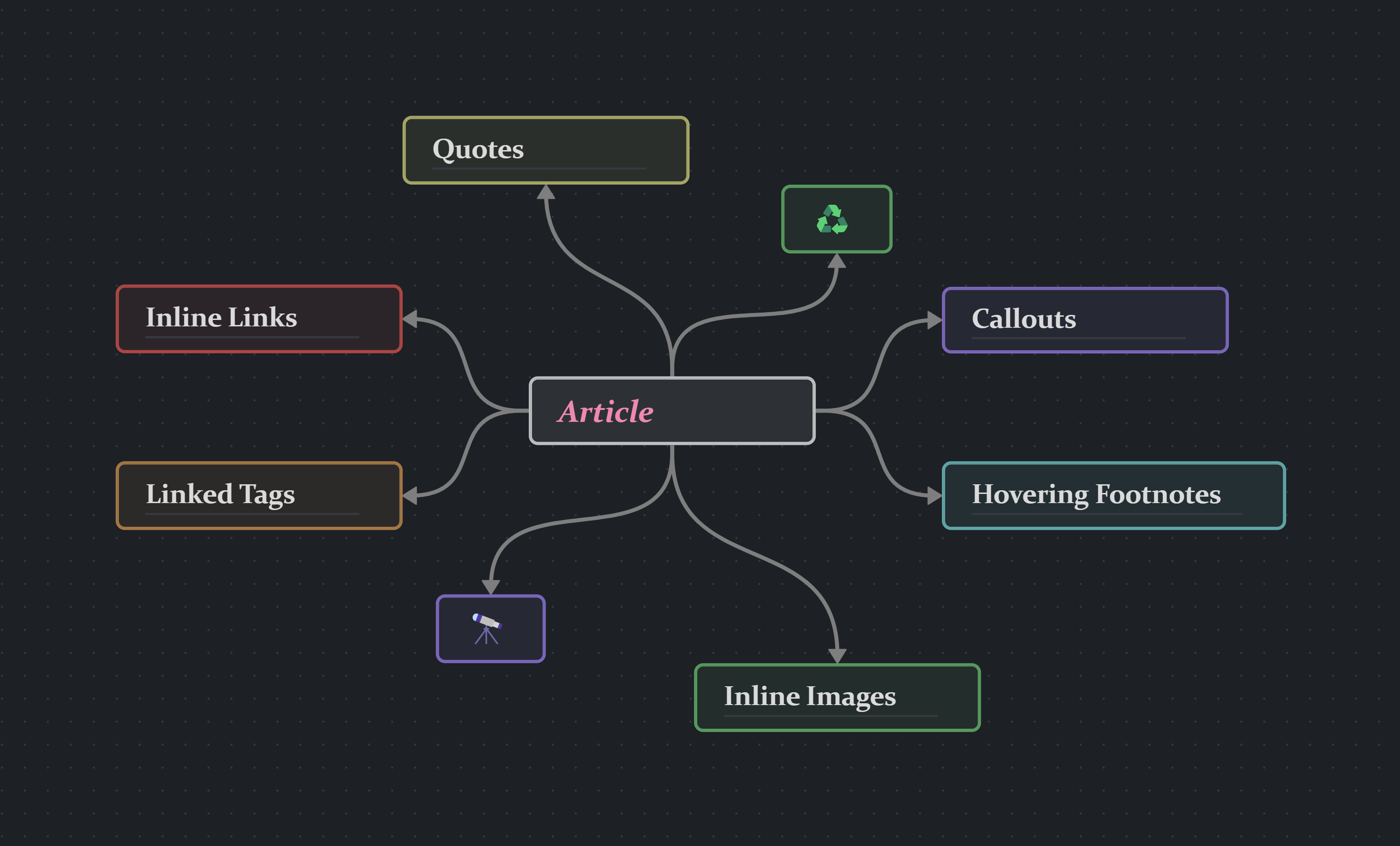Major components of the Blog
A look at all the major accessible customizations I did to make the articles more engaging!
Published on: 07-20-2024
Written by: Purvagami

The notion that the majority of non-scholarly populace is repulsed by the scholarly works or either doesn't care about the content is hugely unfounded. There are many people who are passionate about the cutting edge research going on which they want to consume directly from the primary source instead of tertiary newspieces but are barred from doing very much so due to the unnecessarry verbiage of the articles. I am delineating my custom framework to bridge that significant gap no matter how insignificantly I can!
I recently graduated with my Masters degree in Computer Science from UC San Diego where I was fortunate enough to also be the very first among its graduates to receive a specialization in Human-Computer Interaction or HCI for short. During the last year of my Masters, I was even more fortunate to read thoroughly about the drivers of Human accessibility when interacting with these binary machines we call computers.
What is HCI?
HCI, as the name suggests, is the study and the application of effective, accessible and effortless interactions between computer interfaces and humans. If you are wise enough(polite way of saying old enough) to surf the web in the early 2000s, you can recall the abject dearth of good user interfaces. It was as if machines were made by engineers to interact with engineers. As if, a generic user was expected to know what each button on the screen is going to do; what even is a hyperlink and what isn’t etc. The field of HCI tackles precisely this problem and stalwarts of the field like Don Norman and Ben Shneiderman with others laid out the ground rules for better human readability and accessibility.
But why am I talking about some niche specialization I did and its history? Well one reason is that being a recent graduate I am always impressed by my ability to never miss a chance to boast my credentials 😗 so thats that! And the second reason is directly responsible for the design choices I made while creating this Blog!
Human-Human Interaction
In the abovementioned final year of my research based classes, I found a wealth of techniques and frameworks to accentuate the Human-Computer interaction by means of decreasing friction between user motivation to task completion. In simple terms, reducing the time it takes from the motivation of completing a task to the actual completion of task.
Call it irony or an existential joke, the research papers, through which I was voraciously digging through to quench my HCI thirst, propagating in the academia were framed in the exact opposite format of what they were positing as to go completely over the heads of avid readers like me. It was truly embarrassing at first for me to not follow long with the authors of the paper. Initially, I dejectedly accepted my incompetency at understanding academic papers, but then I soon realized that this was not a me problem. Scholars themselves struggle to grasp even 50% of their field-specific papers. I talked to a lot of my grad and PhD friends and even some professors also who, with great exasperation, opened up about the sorry state of academic writing.
Here I was reading about how can computers communicate more effectively with humans, and funnily enough the human to human communication was being jeopardized in the process!
Everything wrong with Academic writing
What’s even more concerning is that this isn’t limited to highly technical domains of STEM but is virtually similar in the Literary field and that of Humanities 🤯 The reason I know this is apart from my scientific proclivities, I also ardently consider myself a student of Theology, Philosophy and Indic Civilizational studies because of which I studiously consume a lot of scholarly works related to above-mentioned topics. My 6-7 year of experience reading these kinds of works has made me realized one truth very clearly: The essence of the case in point is preceded and equally superseded by linguistic jugglery with abstract verbiage and unnecessary domain specific jargon
So it has always been my desire to consume such rich content (rich in depth, not in presentation) with the added boost of human readability. The research to me have always looked to be written more for the editor and less for the human. Wild if you think about it. So lets look at some of the initial custom components I have built for this blog with the help of Astro .
Custom Blocks
My very first thought to make any scholarly work look good was very simple and drawn on a very core trigger of humans: Beauty. We humans are drawn to anything which has its on bling✨. And this bling must be translated here in the layout of the work.
TIP
Callout variant="tip". Use this to provide a cool tip.
CAUTION
Callout variant="caution". Use this to warn people of potential issues.
DANGER
Callout variant="danger". Use this to tell people not to do something.
INFO
Callout variant="info". Use this to provide extra secret sauce.
console.log("This is a sample javascript log")